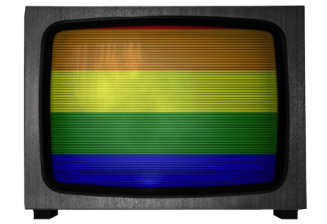 See how queerness on TV has, and hasn't, changed over time. See how queerness on TV has, and hasn't, changed over time.
Tags: inequality, lgbtq, marriage/family, media, sex/sexuality, representation, 00 to 05 mins
Year: 2014 Length: 3:55 Access: YouTube Summary: At the 2015 Emmy Awards, Viola Davis won an Emmy for her role in the TV show, “How to Get Away With Murder,” making her the first African-American to win an Emmy for best lead actress in a drama series. Her acceptance speech was equally important, as she “placed her award within the larger context of diversity in Hollywood.” Davis’s win and acceptance speech reflect a situation that is simultaneously characterized by changing and static social dynamics. This resembles what sociologist Patricia Hill Collins has called the “changing-same” nature of contemporary social inequality, a situation in which new opportunities for change are presented as a result of dramatic shifts in the global political economy, yet where patterns of racial, gender, class and other inequalities nonetheless remain intact. This video clip provides another opportunity to consider the changing-same feature of social inequality in Hollywood. Focusing specifically on representations of queer characters on television, the clip illustrates how these representations have changed over the past several decades. As explained in this Slate article, “These days there are more queer TV characters than ever before, and television representations of gay life are increasingly rich and nuanced, even as the old lesbians-titilate, gays-entertain tropes sometimes remain in play. This video considers all the out-queers on the small screen—as well as all the gay wannabes, pretend-to-bes, and should-bes—taking stock of how far we've come and looking forward to where we might go next.” Yet, given Collins' insight on the changing-same nature of social inequalities, viewers are encouraged to consider how patterns of inequality around sexuality, queerness, and gender non-conformity remain entrenched in American popular culture. Thanks to Michael Miller for suggesting this clip. Submitted By: Valerie Chepp
6 Comments
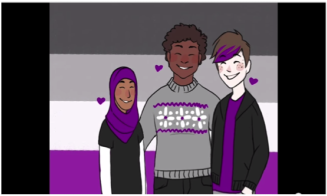 This video chronicles one person's experience being asexual. This video chronicles one person's experience being asexual.
Tags: emotion/desire, lgbtq, sex/sexuality, asexuality, heteronormativity, identity, media, representation, 00 to 05 mins
Year: 2015 Length: 2:25 Access: YouTube Summary: This video is an animated story of a young asexual’s life and her experiences. Asexuality is defined as the lack of sexual attraction to any gender. This is different from celibacy. While a person who is celibate (i.e., someone who choses not to have sex) can still experience sexual attraction, most asexuals are simply not interested in sex. There are asexuals who have sex, but they do not feel sexually attracted to their partners. They may chose to have sex for intimacy, or to feel closer to their partners, but it is not out of sexual attraction. This person's story started out when they were in middle school. The author says that she started to feel different from her friends around that time. This is when most of her friends started to talk about their crushes, which the author never had. Around the same time the author noticed that all of the books they read centered on romance and sexual attraction. This made her feel even more out of place, due to lack of representation in the media, and she felt very alienated. To fit in with cultural norms, the author made up crushes so as not to seem different from her peers. This, however, did not work and she started avoiding the subject of crushes altogether. The author felt as though by not participating in this part of school culture she came off as aloof and "different." Not a pleasant feeling. So, when the author went to high school she started dating to see if she might "get it." However, she was disappointed, as she still didn’t understand everyone’s obsession with the opposite sex. After not doing too well dating men, the author thought she might be gay. So she started dating girls. The results, however, were the same. The author still did not get the appeal of dating or sex. This lead the author to think that she was broken and alone. She felt as though she could not fit in with social norms and was alienated by hyper-sexualized media. Finally, the author found an online community of fellow asexuals. Being able to label how she felt and knowing that there were others like her helped the author finally stop feeling broken. This video is useful for talking about sexualities, and how media representations (or a lack thereof) affects people. If you never see anyone like yourself represented in the media, you start to feel like you’re the problem and that you don’t belong. By finding others like herself, the author was able to accept herself and finally come to terms with her identity. For additional resources, check out The Sociological Cinema's other videos on asexuality. Submitted By: Abigail Adelsheim-Marshall 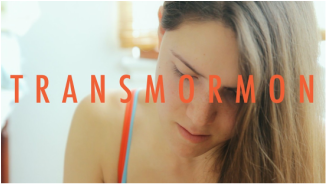 Eri Hayward discusses her life as a trans woman Eri Hayward discusses her life as a trans woman Tags: inequality, intersectionality, lgbtq, prejudice/discrimination, religion, cisgender, mormon, trans*, transgender, subtitles/CC, 11 to 20 mins Year: 2014 Length: 14:52 Access: YouTube; Vimeo Summary: This short documentary entitled Transmormon, tracks the life of Eri Hayward, who was born and raised in Utah as a Mormon. Eri discusses how she had to come to terms with the fact that the gender she was assigned at birth was not the gender she knows herself to be. As she prepares for sex reassignment surgery, she and her parents recount her journey and how she has worked to reconcile her transgender identity with her religious beliefs as a member of the Church of Jesus Christ of Latter-day Saints. People are often hesitant to talk about what has been clearly stigmatized, so Transmormon provides an an excellent means of beginning a discussion about transgender experiences and identities. The film centers on Eri's intensely personal experiences growing up, but students can be encouraged to think about the implications of widespread stigmatization against transgender people, including the role it plays in creating high levels of violence and discrimination, higher rates of suicide, and inferior access to health care. To learn more about the public issues many transgender people face, explore our Pinterest board on the topic. Submitted By: Samuel H. Allen 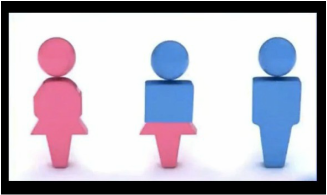 ISU adds gender-neutral labels to its restrooms ISU adds gender-neutral labels to its restrooms Tags: crime/law/deviance, gender, inequality, knowledge, lgbtq, media, prejudice/discrimination, sex/sexuality, social construction, agender, androgyne, bigender, gender fluid, genderqueer, neutrois, non-binary, trans*, transgender, 00 to 05 mins Year: 2014 Length: 0:50 Access: Mediaite Summary: In this clip from Fox & Friends Heather Nauert reports that Illinois State University recently relabeled its "family” restrooms as "gender-neutral." She kicks off the segment by saying,"Someone call the P.C. police!" and warns that viewers are "not going to believe this one.” The giddy laughter of her off-camera colleagues is audible while she delivers her exasperated explanation of the new restroom symbols. The video is useful in any class wrestling with the social construction of gender, the gender binary, and consequences of rigidly enforced gender categories. People who identify as transgender, two spirit, demiguy, demigirl, bigender, non-binary, trigender, third gender, genderqueer, gender fluid, androgyne, neutrois, and agender (and others) have often reported instances of ridicule and danger faced when using public restrooms. For this group, the labeling change means the difference between being able to safely use public restrooms at their university. What is interesting is not the change toward more inclusive signage at Illinois State University, but how Fox & Friends uses their platform as a major news network to actively police the gender binary. Nauert begins by framing the change as an instance of political correctness, a term that suggests the new signs are of trivial importance. The demeanor of both newscaster and her off-camera colleagues is another cue that viewers should not regard the change as an important or positive development at Illinois State University. Although times are changing, news programs still give lip service to the idea that their job is simply to give the public impartial (i.e., fair and balanced) information about important events. What is discussed less is the role the media plays in shaping the public's understanding of those events and reconstituting the state of affairs where excluding people who do not conform to the gender binary is acceptable. For more information about bathrooms as a site of gender politics, check out our Pinterest board on the topic. Submitted By: Lester Andrist 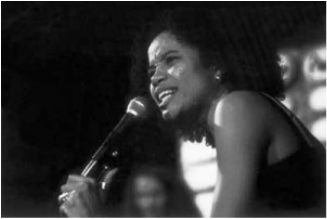 Poet Stayceyann Chin performs "Feminist or a Womanist" Poet Stayceyann Chin performs "Feminist or a Womanist" Tags: art/music, community, discourse/language, intersectionality, lgbtq, multiculturalism, race/ethnicity, categories, labels, spoken word poetry, 00 to 05 mins Year: 2007 Length: 3:32 Access: YouTube Summary: I had to watch Stayceyann Chin’s video several times before her message began resonating within me. She critiques the notion that we must side with one group over another, arguing that we need to have a sense of understanding about each other that transcends differences. She does a phenomenal job in challenging the common claim that "if you are not for us, you are against us.” She well articulates that we miss the beauty of our being by living in fear of ridicule, and when "people get scared enough, they pick a team" that may satisfy others, but not themselves. Our need to box-in and stereotype what we cannot understand or agree with only limits our ability to see each other as common creatures. Child star Raven Symone makes a similar point in her adamant denial about the personal relevance of labels. Oprah warns her during the interview that she will get push-back for doing this, and she indeed did receive significant adverse publicity in claiming the she is neither lesbian nor black/African-American. Such reactions to a pronouncement from a person who seems before her time, from a generation that believes they are ahead of their time, indicate how uncomfortable people are when group labels are deemed irrelevant for establishing personal identity. It also suggests associated questions, including: What is wrong about failing to identify as either black/African-American or lesbian? Does it betray those who are otherwise like her, but who do see themselves as belonging to such categories? Moreover, are we truly free to be individuals, even in a society held to promote the value of individual autonomy? (Note: A version of this post originally appeared on SoUnequal.) Submitted By: Ayanna Allen 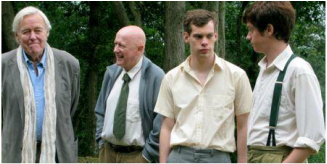 This short film examines the changing lives of gay men in rural UK. This short film examines the changing lives of gay men in rural UK. Tags: aging/life course, emotion/desire, lgbtq, prejudice/discrimination, rural/urban, sex/sexuality, adolescence, gay, performative social science, uk, 21 to 60 mins Year: 2012 Length: 30:00 Access: Vimeo Summary: Rufus Stone is a short film about "love, sexual awakening, and treachery." According to Director Josh Appignanesi, "the story dramatizes the old and continued prejudices of village life from three main perspectives. Chiefly it is the story of Rufus, an ‘out’ older gay man who was exiled from the village as a youth and reluctantly returns from London to sell his dead parents’ cottage, where he is forced to confront the faces of his estranged past. Of these, Abigail is the tattle-tale who ‘outed’ Rufus 50 years ago when he spurned her interest. She has become a lonely deluded lush. Flip, the boy Rufus adored, has also stayed in the village: a life wasted in celibacy (occasionally interrupted by anonymous sexual encounters) and denial (who is) looking after his elderly mother. But Rufus too isn’t whole, saddled with an inability to return or forgive." The film is based on three years of a Research Council UK funded study of the lives of older lesbians and gay men in south west England and Wales, a part of the national New Dynamics of Ageing Programme of research. The project was led by Kip Jones, who also wrote the story and acted as Executive Producer for the film. Winner of two awards, the film has gone on to be screened at film festivals, other universities in the UK, USA and Canada and by organizations such as Alzheimer’s Society UK, LGBT groups, and health, social and aging support networks. Screenings of the film would be appropriate for a wide variety of audiences, including in undergraduate and graduate teaching, community groups, and LGBT and aging support organisations. Viewers can access more information about the project and film at the Rufus Stone Blog. Submitted By: Kip Jones  In Both, Rebeca learns the truth about a childhood surgery. In Both, Rebeca learns the truth about a childhood surgery. Tags: biology, bodies, gender, lgbtq, science/technology, sex/sexuality, bisexuality, intersex, sexual expression, sexual identity, sexual orientation, 61+ mins Year: 2005 Length: 86:20 Access: Vimeo Summary: [Trigger warning for those who might be traumatized by depictions of the sex reassignment surgery many intersex people experience as children] People often want to know how many people are born intersex? Unless one is specific about the many physical features that often get named "intersex," the question is difficult to answer. For instance, based on research from Blackless et. al. (and reported here), in the medicalizing language of late onset adrenal hyperplasia, 1 in 66 people are intersex; however, only 1 in about 150,000 are intersex if you restrict the label to include only those who have what medical doctors refer to as complete gonadal dysgenesis. The frequency of people receiving surgery to "normalize" the appearance of their genitals is about 1 or 2 people in 1,000. Frequencies are perhaps an interesting place to start a discussion on intersex, but in themselves, numbers do little to give voice to those who are born intersex within a culture and society that upholds a strictly dimorphic understanding of sex. The above film, Both, is a compelling drama, based on the experiences of many intersex adults, and the film tells a story of an issue that has been widely silenced through shame and secrecy. In the film, Rebeca Duarte, played by Jackie Parker, works as a stunt double for indie action films in San Francisco. From rolling out of cars to setting herself on fire, she puts her life at risk on a daily basis. Work, lovers and friends take up most of her time, but deep inside, she feels something is missing. Rebeca feels strangely disconnected from her own body and can’t figure out why. One day she mysteriously receives a photo album from someone in Peru, where she had spent her childhood. The album contains pictures of her parents and her brother who had supposedly died, but no images of herself. Feeling unsettled, Rebeca sets out to discover the mystery and unravel the web of lies that both the doctors and her parents have spun her whole life. Through her fight to uncover the truth, Rebeca discovers her own identity and a renewed passion for life. Both works by posing compelling questions about gender and sexuality through the experiences of its intersex protagonist. For those considering showing the film in class, note that nudity, masturbation, and sexual intercourse are depicted at 17:50 mins, 21:30 mins, and 53:20 mins. Submitted By: Leslie Jaye 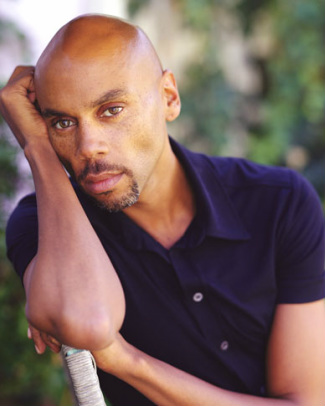 On the Arsenio Hall Show, RuPaul describes power as a system. On the Arsenio Hall Show, RuPaul describes power as a system. Tags: inequality, intersectionality, lgbtq, prejudice/discrimination, race/ethnicity, sex/sexuality, homophobia, racism, systems of power, 00 to 05 mins Year: 2014 Length: 2:02 Access: YouTube Summary: In a recent interview with Arsenio Hall (start 3:33; end 5:35), RuPaul provides a pithy explanation of how power, privilege, and inequality operate by similar logic structures across different social and historical contexts. After referencing football player Michael Sam's recent decision to come out as gay just prior to the NFL draft, Arsenio asks RuPaul to reflect on homophobia in the black community. RuPaul responds by reframing the discussion to take on a more systemic perspective of how power works, drawing parallels to the oppressions faced by black and queer people. Arsenio plays "devil's advocate" by evoking (though not explicitly referencing) black people's history with slavery, a history never experienced exclusively by gay people. RuPaul replies by explaining how racism, homophobia, and other systems of oppression rely on the same logic structures, in that they all revolve around "the ego needing to strengthen itself through putting someone else down. That's the similarity. And that's the same for people who have been oppressed for religion or race or sexuality." While sociologists might use slightly different vocabulary (for example, focusing less on "the ego"), sociologists draw attention to the same insight, illustrating how, as Allan Johnson argues, different forms of oppression all rely on systemic "patterns of exclusion, rejection, privilege, harassment, discrimination, and violence" (697). For the full interview between RuPaul and Arsenio, click here. Submitted By: Valerie Chepp 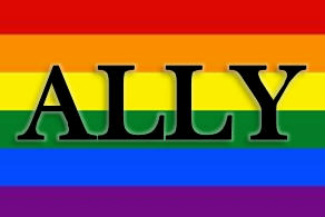 This documentary explores allyship with the LGBTQ community. This documentary explores allyship with the LGBTQ community. Tags: inequality, lgbtq, prejudice/discrimination, sex/sexuality, ally, coming out, 61+ mins Year: 2013 Length: 65:15 Access: Vimeo Summary: Ally is a documentary exploring what it means to support and defend members of the LGBTQ community in the 21st century. Featuring interviews with parents, educators, artists, writers, and members that identify as LGBTQ, the film analyzes current stereotypes in the media; struggles experienced by members of the LGBTQ community and their families; how to support a friend or family member who is "coming out"; allyship within the LGBTQ community; and gender identity and discrimination in the work place. Each clip in the documentary features a testimony from a different speaker, offering a different perspective and opportunity for classroom discussion. Any of the individual speaker's analyses can be a constructive means to spur discussion. Submitted By: Timothy Lydon 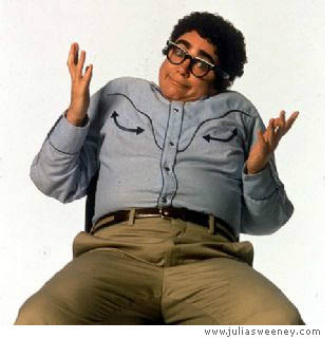 Gender ambiguity was portrayed in the SNL skit, "It's Pat." Gender ambiguity was portrayed in the SNL skit, "It's Pat." Tags: discourse/language, gender, knowledge, lgbtq, sex/sexuality, gender ambiguity, gender neutral pronouns, 00 to 05 mins Year: 1991 Length: 5:55 Access: Yahoo Screen Summary: What is it, exactly, about gender ambiguity that is presumed to be so funny? Referencing the now classic Saturday Night Live sketch comedy "It's Pat," I pose this question to students when teaching about the deeply embedded ways that gender structures our society. Not to be conflated with genital ambiguity (which focuses on sex characteristics), gender ambiguity refers to a type of gender presentation in which a person's gender (e.g., man or woman) is unclear. In this clip (season 17, episode 3), coworkers throw the androgynous fictional character Pat O'Neil Riley (played by Julia Sweeney) a surprise birthday party. As with all segments in the series, people's interactions with Pat center around trying to decipher Pat's gender; overwhelmingly, Pat's indeterminate gender is framed to be a source of deep confusion for others, to the point where the social interaction is compromised, thus resulting in a presumably comedic scenario. Throughout the skit, co-workers search for clues that might give insight into Pat's gender, as they are unsure how to behave around Pat without this knowledge. For example, a male co-worker doesn't know whether putting his arm around Pat's shoulders is an appropriate form of consoling. Similarly, in this clip (as well as others in the series), Pat's acquaintances ask questions that might reveal the gender of Pat's romantic affection, assuming that the romantic partner would be of the "opposite" gender (this assumption illustrates the concept of heteronormativity). The fact that something so simple as not knowing one's gender can compromise entire social interactions, and that we have culturally defined this as "funny," illustrates how profoundly this social construction organizes society. Specifically, viewers can see the demand that language imposes on knowing one's gender, as co-workers don't know whether to use terms like mother, father, sister, brother, son, daughter, or fellow, and they struggle to substitute gender neutral terms like child, sibling, and person. While the skit's theme song aims to "humorously" represent the limitations of language, it resorts to the offensive notion that individuals with an ambiguous gender are an "it" or a "that." In addition to illustrating the limits of language, this clip is useful for introducing students to the utility and importance of gender neutral pronouns in our lexicon, such as ze, hir, and xem. Submitted By: Valerie Chepp |
Tags
All
.
Got any videos?
Are you finding useful videos for your classes? Do you have good videos you use in your own classes? Please consider submitting your videos here and helping us build our database!
|
 RSS Feed
RSS Feed
